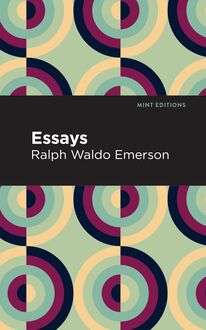-
 Univers
Univers
-
 Ebooks
Ebooks
-
 Livres audio
Livres audio
-
 Presse
Presse
-
 Podcasts
Podcasts
-
 BD
BD
-
 Documents
Documents
-
- Cours
- Révisions
- Ressources pédagogiques
- Sciences de l’éducation
- Manuels scolaires
- Langues
- Travaux de classe
- Annales de BEP
- Etudes supérieures
- Maternelle et primaire
- Fiches de lecture
- Orientation scolaire
- Méthodologie
- Corrigés de devoir
- Annales d’examens et concours
- Annales du bac
- Annales du brevet
- Rapports de stage
La lecture à portée de main
Vous pourrez modifier la taille du texte de cet ouvrage
Découvre YouScribe en t'inscrivant gratuitement
Je m'inscrisDécouvre YouScribe en t'inscrivant gratuitement
Je m'inscrisEn savoir plus
Vous pourrez modifier la taille du texte de cet ouvrage
En savoir plus

Description
Harriet Beecher Stowe’s follow-up to her popular yet controversial book, Uncle Tom’s Cabin that features critical information supporting the brutally honest portrayal of institutional slavery. Due to an overwhelming response, it was published one year after the original novel. A Key to Uncle Tom’s Cabin is a detailed explanation of the practices and imagery portrayed in Uncle Tom’s Cabin. The previous novel was harshly criticized by Southerners who felt Stowe’s descriptions were unfounded. In an effort to defend her work and beliefs, the author delivered a thorough account of her research. Certain editions were published with the full title A Key to Uncle Tom’s Cabin: Presenting the Original Facts and Documents upon Which the Story Is Founded, Together with Corroborative Statements Verifying the Truth of the Work. Harriet Beecher Stowe was a staunch and proactive abolitionist. She used her voice to highlight social and moral injustice despite public scrutiny. A Key to Uncle Tom’s Cabin, reenforced her commitment to the truth and the pursuit of freedom. With an eye-catching new cover, and professionally typeset manuscript, this edition of A Key to Uncle Tom’s Cabin is both modern and readable.
Sujets
Informations
| Publié par | Mint Editions |
| Date de parution | 21 mai 2021 |
| Nombre de lectures | 0 |
| EAN13 | 9781513276076 |
| Langue | English |
| Poids de l'ouvrage | 1 Mo |
Informations légales : prix de location à la page 0,0650€. Cette information est donnée uniquement à titre indicatif conformément à la législation en vigueur.
Extrait
A Key to Uncle Tom’s Cabin
Harriet Beecher Stowe
A Key to Uncle Tom’s Cabin was first published in 1853.
This edition published by Mint Editions 2020.
ISBN 9781513271071 | E-ISBN 9781513276076
Published by Mint Editions ®
minteditionbooks .com
Publishing Director: Jennifer Newens
Design & Production: Rachel Lopez Metzger
Project Manager: Micaela Clark
Typesetting: Westchester Publishing Services
C ONTENTS P ART I I. II. M R . H ALEY III. M R . AND M RS . S HELBY IV. G EORGE H ARRIS V. E LIZA VI. U NCLE T OM VII. M ISS O PHELIA VIII. M ARIE S T . C LARE IX. S T . C LARE X. L EGREE XI. S ELECT I NCIDENTS OF L AWFUL T RADE XII. T OPSY XIII. T HE Q UAKERS XIV. T HE S PIRIT OF S T . C LARE P ART II I. I NTRODUCTORY II. W HAT IS S LAVERY ? III. S OUTHER V. T HE C OMMONWEALTH —T HE N E P LUS U LTRA OF L EGAL H UMANITY IV. P ROTECTIVE S TATUTES V. P ROTECTIVE A CTS OF S OUTH C AROLINA AND L OUISIANA .—T HE I RON C OLLAR OF L OUISIANA AND N ORTH C AROLINA VI. P ROTECTIVE A CTS WITH R EGARD TO F OOD AND R AIMENT , L ABOR , ETC . VII. T HE E XECUTION OF J USTICE VIII. T HE G OOD O LD T IMES IX. M ODERATE C ORRECTION AND A CCIDENTAL D EATH —S TATE V. C ASTLEMAN X. P RINCIPLES E STABLISHED .—S TATE V. L EGREE ; A C ASE N OT IN THE B OOKS XI. T HE T RIUMPH OF J USTICE O VER L AW XII. A C OMPARISON OF THE R OMAN L AW OF S LAVERY WITH THE A MERICAN XIII. T HE M EN B ETTER T HAN T HEIR L AWS XIV. T HE H EBREW S LAVE -L AW C OMPARED WITH THE A MERICAN S LAVE -L AW XV. S LAVERY IS D ESPOTISM P ART III I. D OES P UBLIC O PINION P ROTECT THE S LAVE ? II. P UBLIC O PINION F ORMED BY E DUCATION III. S EPARATION OF F AMILIES IV. T HE S LAVE -T RADE V. S ELECT I NCIDENTS OF L AWFUL T RADE , OR F ACTS S TRANGER THAN F ICTION VI. M ILLY E DMONSON VII. E MILY R USSELL VIII. K IDNAPPING IX. S LAVES A S T HEY A RE , O N T ESTIMONY OF O WNERS X. “P OOR W HITE T RASH ” P ART IV I. T HE I NFLUENCE OF THE A MERICAN C HURCH ON S LAVERY II. T HE S UBJECT C ONTINUED III. M ARTYRDOM IV. S ERVITUDE IN THE P RIMITIVE C HURCH C OMPARED WITH A MERICAN S LAVERY V. VI. VII. VIII. IX. I S T HE S YSTEM OF R ELIGION W HICH IS T AUGHT THE S LAVE THE G OSPEL ? X. W HAT IS T O B E D ONE ? A PPENDIX : F ACT VS . F IGURES; OR, THE N INE A RAB B ROTHERS . B EING A N EW A RABIAN N IGHT ’ S E NTERTAINMENT
PART I
I
At different times, doubt has been expressed whether the representations of “Uncle Tom’s Cabin” are a fair representation of slavery as it at present exists. This work, more, perhaps, than any other work of fiction that ever was written, has been a collection and arrangement of real incidents,—of actions really performed, of words and expressions really uttered,—grouped together with reference to a general result, in the same manner that the mosaic artist groups his fragments of various stones into one general picture. His is a mosaic of gems,—this is a mosaic of facts.
Artistically considered, it might not be best to point out in which quarry and from which region each fragment of the mosaic picture had its origin; and it is equally unartistic to disentangle the glittering web of fiction, and show out of what real warp and woof it is woven, and with what real coloring dyed. But the book had a purpose entirely transcending the artistic one, and accordingly encounters, at the hands of the public, demands not usually made on fictitious works. It is treated as a reality,—sifted, tried and tested, as a reality; and therefore as a reality it may be proper that it should be defended.
The writer acknowledges that the book is a very inadequate representation of slavery; and it is so, necessarily, for this reason,—that slavery, in some of its workings, is too dreadful for the purposes of art. A work which should represent it strictly as it is would be a work which could not be read. And all works which ever mean to give pleasure must draw a veil somewhere, or they cannot succeed.
The author will now proceed along the course of the story, from the first page onward, and develop, as far as possible, the incidents by which different parts were suggested.
II
M R . H ALEY
In the very first chapter of the book we encounter the character of the negro-trader, Mr. Haley. His name stands at the head of this chapter as the representative of all the different characters introduced in the work which exhibit the trader, the kidnapper, the negro-catcher, the negro-whipper, and all the other inevitable auxiliaries and indispensable appendages of what is often called the “divinely-instituted relation” of slavery. The author’s first personal observation of this class of beings was somewhat as follows:
Several years ago, while one morning employed in the duties of the nursery, a colored woman was announced. She was ushered into the nursery, and the author thought, on first survey, that a more surly, unpromising face she had never seen. The woman was thoroughly black, thick-set, firmly built, and with strongly-marked African features. Those who have been accustomed to read the expressions of the African face know what a peculiar effect is produced by a lowering, desponding expression upon its dark features. It is like the shadow of a thunder-cloud. Unlike her race generally, the woman did not smile when smiled upon, nor utter any pleasant remark in reply to such as were addressed to her. The youngest pet of the nursery, a boy about three years old, walked up, and laid his little hand on her knee, and seemed astonished not to meet the quick smile which the negro almost always has in reserve for the little child. The writer thought her very cross and disagreeable, and, after a few moments’ silence, asked, with perhaps a little impatience, “Do you want anything of me to-day?”
“Here are some papers,” said the woman, pushing them towards her; “perhaps you would read them.”
The first paper opened was a letter from a negro-trader in Kentucky, stating concisely that he had waited about as long as he could for her child; that he wanted to start for the South, and must get it off his hands; that, if she would send him two hundred dollars before the end of the week, she should have it; if not, that he would set it up at auction, at the court-house door, on Saturday. He added, also, that he might have got more than that for the child, but that he was willing to let her have it cheap.
“What sort of a man is this?” said the author to the woman, when she had done reading the letter.
“Dunno, ma’am; great Christian, I know,—member of the Methodist church, anyhow.”
The expression of sullen irony with which this was said was a thing to be remembered.
“And how old is this child?” said the author to her.
The woman looked at the little boy who had been standing at her knee, with an expressive glance, and said, “She will be three years old this summer.”
On further inquiry into the history of the woman, it appeared that she had been set free by the will of her owners; that the child was legally entitled to freedom, but had been seized on by the heirs of the estate. She was poor and friendless, without money to maintain a suit, and the heirs, of course, threw the child into the hands of the trader. The necessary sum, it may be added, was all raised in the small neighborhood which then surrounded the Lane Theological Seminary, and the child was redeemed.
If the public would like a specimen of the correspondence which passes between these worthies, who are the principal reliance of the community for supporting and extending the institution of slavery, the following may be interesting as a matter of literary curiosity. It was forwarded by Mr. M. J. Thomas, of Philadelphia, to the National Era , and stated by him to be “a copy taken verbatim from the original, found among the papers of the person to whom it was addressed, at the time of his arrest and conviction, for passing a variety of counterfeit bank-notes.”
Poolsville, Montgomery Co., Md.,
March 24, 1831
D EAR S IR
I arrived home in safety with Louisa, John having been rescued from me, out of a two-story window, at twelve o’clock at night. I offered a reward of fifty dollars, and have him here safe in jail. The persons who took him brought him to Fredericktown jail. I wish you to write to no person in this state but myself. Kephart and myself are determined to go the whole hog for any negro you can find, and you must give me the earliest information, as soon as you do find any. Enclosed you will receive a handbill, and I can make a good bargain, if you can find them. I will in all cases, as soon as a negro runs off, send you a handbill immediately, so that you may be on the look-out. Please tell the constable to go on with the sale of John’s property; and, when the money is made, I will send on an order to you for it. Please attend to this for me; likewise write to me, and inform me of any negro you think has run away,—no matter where you think he has come from, nor how far,—and I will try and find out his master. Let me know where you think he is from, with all particular marks, and if I don’t find his master, Joe’s dead!
Write to me about the crooked-fingered negro, and let me know which hand and which finger, color, &c.; likewise any mark the fellow has who says he got away from the negro-buyer, with his height and color, or any other you think has run off.
Give my respects to your partner, and be sure you write to no person but myself. If any person writes to you, you can inform me of it, and I will try to buy from them. I think we can make money, if we do business together; for I have plenty of money, if you can find plenty of negroes. Let me know if Daniel is still where he was, and if you have heard anything of Francis since I left you. Accept for yourself my regard and esteem.
R EUBEN B. C ARLLEY
J OHN C . S AUNDERS
This letter strikingly illustrates the character of these fellow-patriots with whom the great men of our land have been acting in conjunction, in carrying out the be
-
 Univers
Univers
-
 Ebooks
Ebooks
-
 Livres audio
Livres audio
-
 Presse
Presse
-
 Podcasts
Podcasts
-
 BD
BD
-
 Documents
Documents
-
Jeunesse
-
Littérature
-
Ressources professionnelles
-
Santé et bien-être
-
Savoirs
-
Education
-
Loisirs et hobbies
-
Art, musique et cinéma
-
Actualité et débat de société
-
Jeunesse
-
Littérature
-
Ressources professionnelles
-
Santé et bien-être
-
Savoirs
-
Education
-
Loisirs et hobbies
-
Art, musique et cinéma
-
Actualité et débat de société
-
Actualités
-
Lifestyle
-
Presse jeunesse
-
Presse professionnelle
-
Pratique
-
Presse sportive
-
Presse internationale
-
Culture & Médias
-
Action et Aventures
-
Science-fiction et Fantasy
-
Société
-
Jeunesse
-
Littérature
-
Ressources professionnelles
-
Santé et bien-être
-
Savoirs
-
Education
-
Loisirs et hobbies
-
Art, musique et cinéma
-
Actualité et débat de société
- Cours
- Révisions
- Ressources pédagogiques
- Sciences de l’éducation
- Manuels scolaires
- Langues
- Travaux de classe
- Annales de BEP
- Etudes supérieures
- Maternelle et primaire
- Fiches de lecture
- Orientation scolaire
- Méthodologie
- Corrigés de devoir
- Annales d’examens et concours
- Annales du bac
- Annales du brevet
- Rapports de stage




















